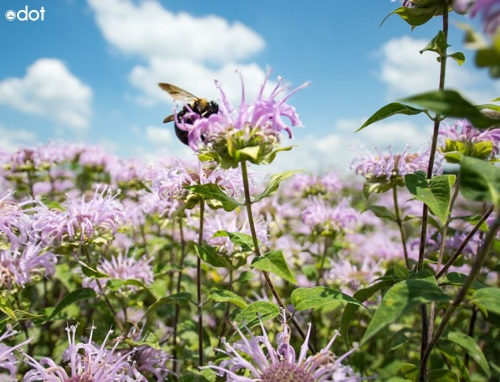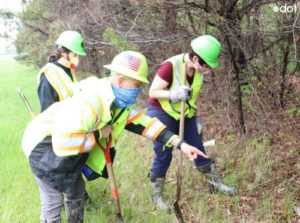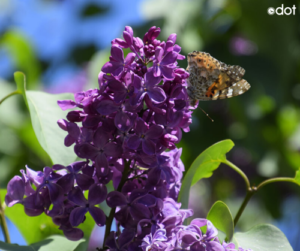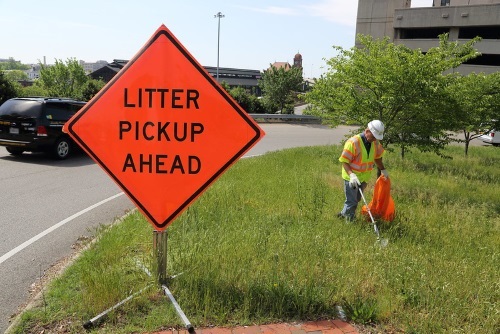A roundup of headlines curated for state transportation environmental professionals
FEDERAL ACTION
House’s Continuing Resolution Would Extend FAST Act – AASHTO Journal
Ginsburg left a long environmental legacy – Politico
At a glance: enforcement of environmental law in USA – Lexology
COVID-19
Pandemic not leading to overflow of medical waste, says waste management company – KMOX
What We Actually Know About How Americans Are Moving During Covid – CityLab
NEPA
House Republicans Unveil NEPA Reform Bill – Transport Topics
Ugly founding of Shenandoah National Park helps explain NEPA’s importance – Daily Sentinel (Op-Ed)
INFRASTRUCTURE RESILIENCE AND SUSTAINABILITY
Study: State DOTs Could Gain Revenue from Solar Arrays – AASHTO Journal
Chattanooga to trial energy-saving adaptive traffic control systems – CitiesToday
CU Denver Researcher Analyzes the Use of Solar Energy at U.S. Airports – University of Colorado Denver
Commentary: A strategy for tactics? – Freight Waves
Miami has resilience plans in place. Now it’s time to put them into action – Miami Herald (Op-Ed)
Electrifying California Cars Could Crush the Grid, or Save It – Bloomberg Green
AIR QUALITY
EPA to Defend Clean Air Rule as Compliant With Ozone Limits – Bloomberg Law
California is ready to pull the plug on gas vehicles – AP
Walmart Aims to End Emissions From Global Operations by 2040 – Bloomberg Green
Energy Transitions, Carbon Reduction and Climate Change: Diesel Technology’s Role in the Future – Diesel Technology Forum (Press release)
ENVIRONMENTAL JUSTICE
Transportation linked to push for equity in San Antonio – KSAT-TV
A sustainable new normal doesn’t have to cost the earth – Environment Journal
NATURAL RESOURCES
Social scientists study visitation patterns in Glacier National Park to mitigate environmental damage – KPAX-TV
A new decision support tool for collaborative adaptive vegetation management in northern Great Plains national parks – UC Berkeley
Trump Administration Releases Plan to Open Tongass Forest to Logging – New York Times
Clean Water Act rewrite may leave popular lakes vulnerable to pollution – Detroit News
CULTURAL RESOURCES
Discover America’s 11 Most Endangered Historic Places for 2020 – National Trust for Historic Preservation
HEALTH AND HUMAN ENVIRONMENT/ACTIVE TRANSPORTATION
Living Sustainably: Green commuting encourages healthier community – Holland Sentinel
State of Oregon to consider new carfree bridge near Willamette Falls in Oregon City – BikePortland
Fine for hitting cyclists while opening car door has quadrupled – Daily Hive Vancouver
Spin app goes live with bike and micromobility lane route optimization – Intelligent Transport
D.C. Council unanimously approves Vision Zero bill aimed at reducing traffic fatalities – Washington Post
TRB RESOURCES/ANNOUNCEMENTS
Critical Issues in Transportation 2019 – TRB (Report Announcement)
TRB Webinar: Balancing the Scales–Equity Analysis in Transportation Planning – TRB
TRB Webinar: Weathering the Storm – Climate Resilience at Airports – TRB
U.S. Transportation Secretary Elaine L. Chao Announces $320.6 Million for Rail Infrastructure and Safety Improvements – USDOT (Press release)
U.S. Department of Transportation Announces $460,000 for Emergency Repairs to Infrastructure Destroyed by Wildfires in Washington State – USDOT (Press release)
Federal Transit Administration Announces $6.2 Million for Transit Planning in Communities Nationwide – FTA (Press release)
FEDERAL REGISTER NOTICES
Guidance Procedures – Architectural and Transportation Barriers Compliance Board (Final rule)






